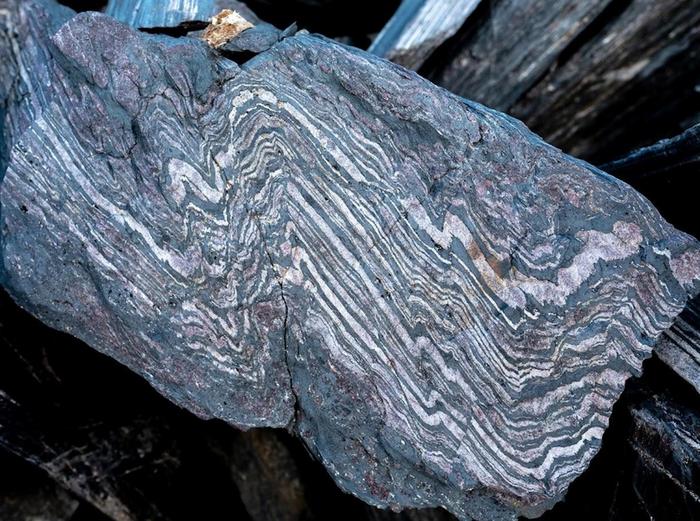
Oldest evidence of Earth’s magnetic field
Earth’s magnetic field protects us from cosmic radiation and charged particles from the sun. Without it, planet Earth wouldn’t be habitable. So the emergence of Earth’s magnetic field is tied to the emergence of life itself. Now scientists have found the oldest signatures yet of Earth’s magnetic field, from 3.7 billion years ago, in ancient features that were set just 800 million years after Earth is thought to have formed.
The Journal of Geophysical Research published these peer-reviewed findings on April 24, 2024. Prior to this, the oldest known geologic feature representing Earth’s magnetic field dated to 3.5 billion years. This new discovery pushes it to 200 million years earlier.
Our young planet’s magnetic field, this research reveals, was roughly half the strength of today’s field. That’s crucial information for understanding the mechanisms that create our world’s magnetic field.
And, of course, this evidence in Greenland rocks has implications for understanding when life might first have arisen on our world.
Early magnetic field and life
Earth has a molten iron core that conducts electric currents, generating a strong magnetic field around our planet. This field is a protective shroud that deflects highly charged particles from the sun, keeping them from reaching the Earth’s surface. Without it, life as we know it would not exist.
Claire Nichols, a geologist at Oxford University in the U.K., is the lead author of the new paper. She said a statement:
The magnetic field is, in theory, one of the reasons we think Earth is really unique as a habitable planet. It’s thought our magnetic field protects us from harmful radiation from space, and also helps us to have oceans and atmospheres that can be stable for long periods of time.
Benjamin Weiss, of the Massachusetts Institute of Technology, is a co-author on the paper. He added:
That’s important because that’s the time when we think life was emerging. If the Earth’s magnetic field was around a few hundred million years earlier, it could have played a critical role in making the planet habitable.
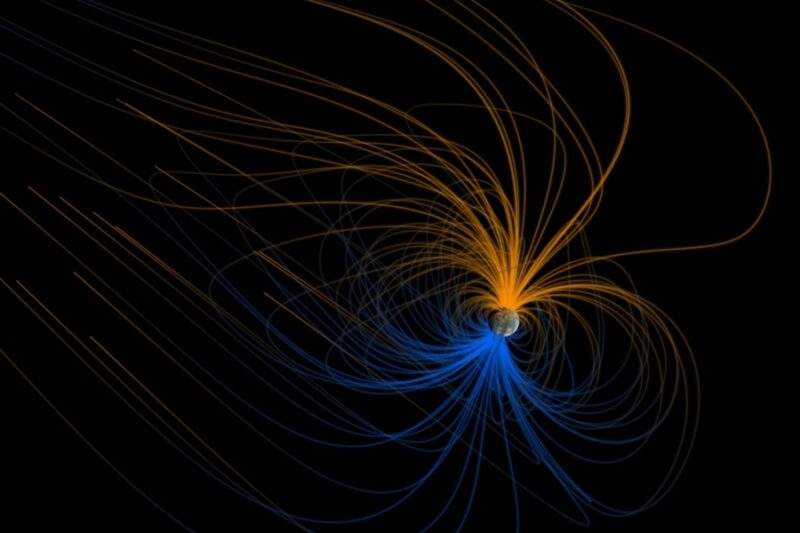
Finding and analyzing the Earth’s oldest rocks
These rocks were collected at the Isua Supracrustal Belt in Greenland. It’s a 20-mile long rock formation containing the oldest preserved rocks on Earth. It’s situated in the midst of ice sheets. Nichols said:
It’s about 150 kilometers (93 miles) away from the capital city [the city of Nuuk, population ~17.6 thousand] and you get helicoptered in, right up against the ice sheet. Here, you have the world’s oldest rocks essentially, surrounded by this dramatic expression of the ice age. It’s a really spectacular place.
Scientists are able to learn about Earth’s ancient magnetic field by studying iron oxide — chemical compounds containing iron and oxygen — in the rocks they collected. These minerals act like small magnets that align with magnetic fields.
The rocks they studied were once sediment on a primordial ocean floor. Over time, intense geological forces metamorphosed the accumulated sediments into rock. These rocks had a striped appearance due to iron-rich and silica-rich deposits. Silica is a common component of ocean sediment, but where did the iron oxide come from? Nichols explained:
Back when there wasn’t oxygen in the atmosphere, iron didn’t oxidize so easily. So it was in solution in the oceans until it reached a critical concentration, when it precipitated out. So, it’s basically a result of iron raining out of the oceans and depositing on the seafloor.
The scientists used technique called uranium-lead dating to get an age estimate for the rocks.
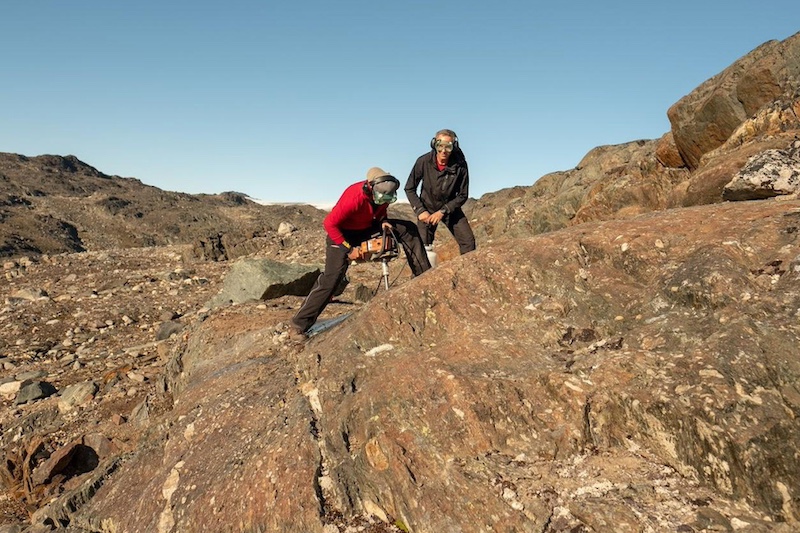
These ancient rocks survived powerful geological upheavals
It’s extraordinary that these 3.7-billion-year-old rocks still exist in their original deposited form. Many types of rock we find today were originally formed when volcanic rock broke down into sediment and geologic forces reformed them back into rock. And, over many hundreds of millions of years, these rocks continued to be subjected to powerful forces that would change their forms. As a result, the orientation of any magnetic minerals in these rocks, once aligned to Earth’s magnetic field, became distorted.
Fortunately, the ancient rocks in this study managed to avoid extreme upheaval that would scramble their original magnetic signatures. The iron oxides in them, aligned with the 3.7-billion-year-old Earth magnetic field, were preserved in pristine condition.
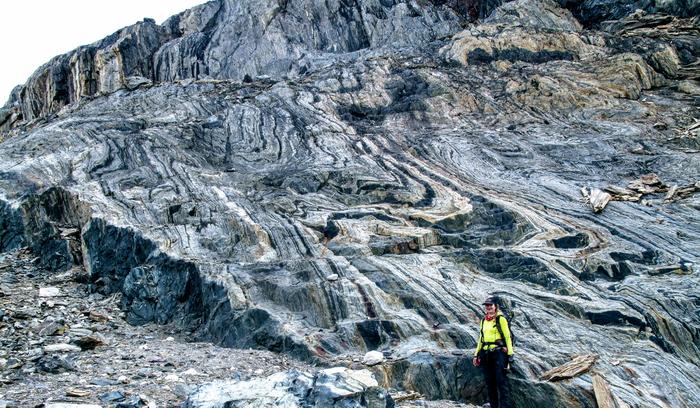
Results that raise new questions
Laboratory analysis showed that the 3.7-billion-year-old magnetic field measured about 15 microtesla. The sun’s present-day magnetic field measures 30 microtesla. Nichols said:
[This evidence shows a magnetic field of about] half the strength, but the same order of magnitude. The fact that it’s similar in strength as today’s field implies whatever is driving Earth’s magnetic field has not changed massively in power over billions of years.
However, the scientists are puzzled to see such a strong magnetic force already in place 3.7 billion years ago, still relatively early in Earth’s history. Today’s magnetic field is believed to be powered by crystallization of Earth’s solid iron inner core. But they did not think that an inner core would have already formed so early in our planet’s history. These findings are raising more questions about our planet’s evolution and the formation of magnetic fields around other rocky worlds in and outside our solar system. That’s why Weiss commented:
It seems like evidence for whatever was generating a magnetic field back then was a different power source from what we have today. And we care about Earth because there’s life here, but it’s also a touchstone for understanding other terrestrial planets. It suggests planets throughout the galaxy probably have lots of ways of powering a magnetic field, which is important for the question of habitability elsewhere.
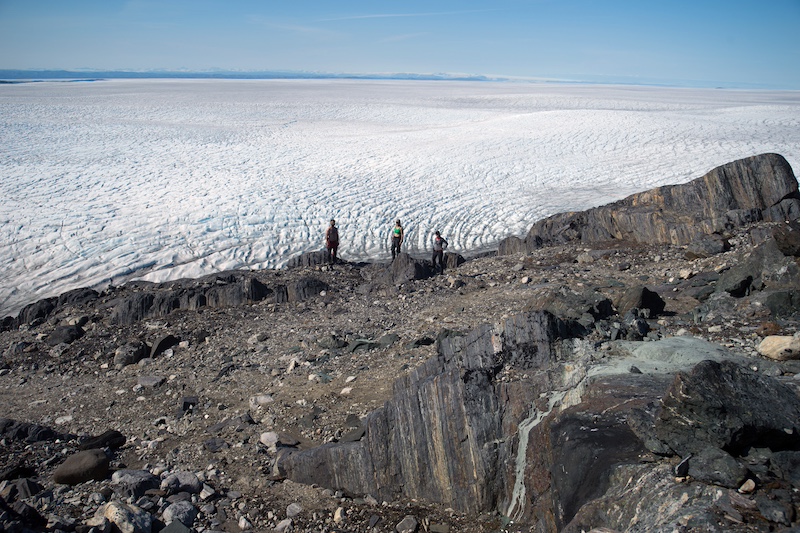
Bottom line: Rocks from Greenland, dating back 3.7 billion years, show the oldest known signatures of Earth’s magnetic field.











